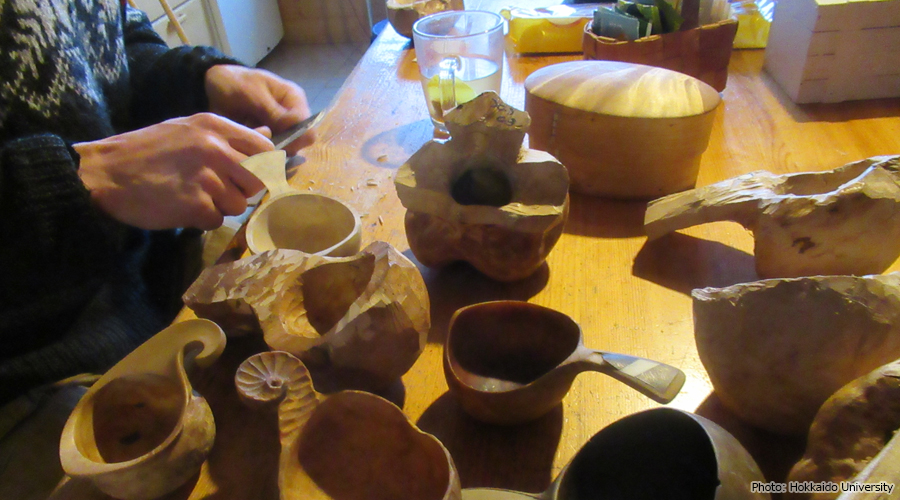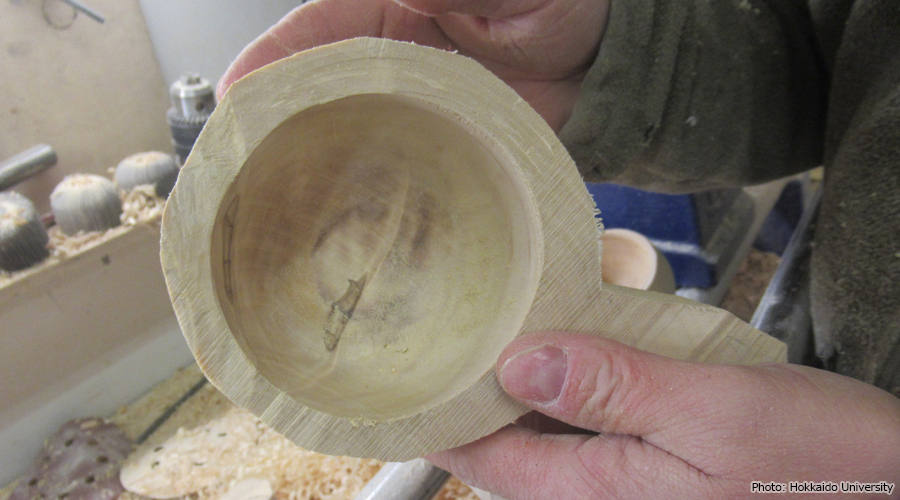Making “kuksa”
Overseas Fellowship Program Participant: FY2022 First Call Short-Term Program
Yumi Tanaka (Hokkaido University)
My previous research worked on understanding the relationship between people and trees thorough traditional practices and customs. For this project, I chose to focus on “kuksa,” a wooden cup made of birch burl, as a way of thinking about the relationships between trees and humans which are constituted by making something from trees, sending it as a present, and using it. This research trip which was supported by ArCS II and was the first step in this new research theme.
“Kuksa” is a traditional handicraft which is made of pahka, hard burl. Pahka is made when a birch tree has been injured. It has symbolism as a traditional souvenir of Lapland, the home of the indigenous people, the Sami. But it has been made in Finland from ancient times as an item for use in everyday life or taking on trips through the forests. Moreover, “kuksa” is often chosen for a gift. These days, it has become known through the world as a popular product of the hiking boom. However, mass-produced “kuksa” are not made using a birch burl.

On this research trip, I visited some craftsmen who make traditional “kuksa” in Finland and listened to their stories about making, and watched how they make woodcraft. In this crafting process, the craftsmen don’t make it one-sidedly. That is, they don’t force a shape onto the wood. They make it by hand, keeping in step with the wood. One craftsman used the word “adventure” to talk about making something with wood. Even if the wood shows surprising patterns in its grain, there is no way to go back or start again. If you lose your concentration for a moment, it spoils. Indeed, it is exactly, these difficult forms in the grain of many birch burls which make the wonderful wave-like patterns called “northern lights” for which “kuksa” are famous, and make each wooden cup unique. Another craftsman said this about making by hand: ”Making by hand is hard and it hurts. But through that process, a little of my spirit enters the wood, I can create a relationship with the tree and come to respect it.” Craftsmen don’t simply “make” something, they place a part of themselves into each object that they craft. It shows that something made by hand isn’t just an “object,” it has a part of the craftsman inside which is then sent on to someone else.

In this article, I wrote mainly about making. However, the circumstances of “kuksa” are actually more complicated. They have symbolic significance as Sami or Finnish souvenirs, and as objects of “duodji,” traditional Sami handicrafts which are said to have more to them than just the physical object we can see, as well as issues of authenticity, deforestation for industrial purposes, and the decline of naturally occurring birch burls due to forestry and commercialization. There are many aspects to “kuksa,” which I will continue to investigate using various different approaches.
